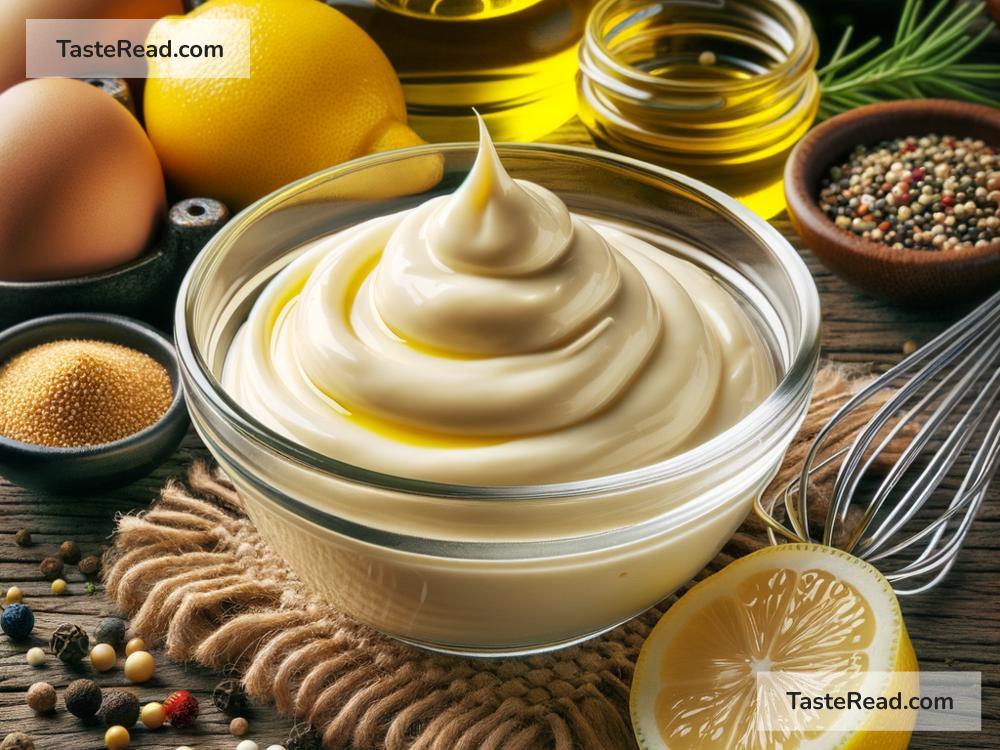How to Prepare Homemade Mayonnaise: A Step-by-Step Guide
Mayonnaise is a creamy, tangy, and versatile condiment that adds flavor to sandwiches, salads, burgers, and so much more. While store-bought mayonnaise is convenient, homemade mayonnaise is fresher, tastier, and allows you to control the ingredients. The best part? It’s super easy to make at home with just a few simple ingredients that are probably already in your kitchen.
In this article, we’ll show you how to prepare mayonnaise from scratch in simple steps. Follow along and you’ll have smooth, delicious homemade mayo in no time!
Why Make Mayonnaise at Home?
Homemade mayonnaise has several benefits:
– Freshness: You know it’s made from fresh ingredients with no artificial preservatives.
– Customization: You can adjust the flavor by adding herbs, garlic, lemon, or spices to suit your taste.
– Better ingredients: You can use high-quality oils and avoid unnecessary additives.
– Cost-effective: Making mayonnaise at home is often cheaper than store-bought versions.
What You’ll Need
To make mayonnaise, you only need a handful of basic ingredients:
- Egg yolk (just one)
- Oil (neutral-flavored oil like vegetable oil, sunflower oil, or light olive oil)
- Vinegar or lemon juice (for acidity and flavor)
- Mustard (optional for flavor and stability)
- Salt (for seasoning)
Equipment:
– A whisk or hand blender (you can also use a food processor).
– A mixing bowl or jar that holds everything securely while you whisk/blend.
Homemade Mayonnaise Recipe
Here’s a step-by-step recipe to make your own mayonnaise:
Step 1: Gather Your Ingredients
To start, make sure you have the following on hand:
- 1 egg yolk (fresh eggs work best, and you’ll separate the yolk from the white).
- 1 cup of oil (use a neutral oil for the best result, but you can experiment with olive oil).
- 1–2 teaspoons of vinegar or lemon juice (this adds tanginess).
- ½ teaspoon mustard (optional, but it helps blend the flavors and stabilize the mixture).
- Pinch of salt (to taste).
Step 2: Start with the Egg Yolk
Place the egg yolk in a clean bowl or the container of your food processor. This will be the base for your mayonnaise, so make sure there’s no egg white mixed in.
Step 3: Add a Splash of Acid
Add the vinegar or lemon juice to the egg yolk. The acidity helps to balance the flavor and improve the texture. You can also mix in a little mustard at this stage, which gives the mayonnaise a mild sharpness and makes it easier to emulsify later.
Step 4: Start Mixing
Using a whisk, hand blender, or food processor, start mixing the yolk and acid together until they are smooth and creamy.
Step 5: Slowly Add Oil
This is the most important step!
Begin pouring in the oil very slowly — just a few drops at a time — while continuously whisking or blending. Emulsification (combining liquids like oil and vinegar) happens when you mix things carefully. If you add too much oil at once, the mixture can break and separate instead of turning into creamy mayonnaise.
Once the mixture starts to thicken, you can increase the amount of oil you’re adding, but keep whisking or blending the whole time.
Step 6: Taste and Adjust
When all the oil has been absorbed and your mayonnaise is thick and creamy, it’s time to taste it. Add a pinch of salt and adjust the acidity with a little extra lemon juice or vinegar if needed. If you want to experiment further, this is the time to add garlic, paprika, herbs, or other flavorings.
Step 7: Store Properly
Transfer your homemade mayonnaise to a clean jar or container, and seal it tightly. It should be stored in the refrigerator and used within 3–5 days since it doesn’t contain preservatives.
Tips for Success
- Use room temperature ingredients: Cold ingredients can make it harder to emulsify, so let the egg yolk and oil sit at room temperature for a bit before starting.
- Don’t rush: The key to perfect mayonnaise is patience. Add the oil very slowly to avoid separation.
- What if it separates? If your mayonnaise looks lumpy or oily instead of smooth, don’t worry! Try adding a teaspoon of warm water or an additional egg yolk, and whisk again slowly to bring it back together.
Variations to Try
Once you master the basic recipe, you can really get creative with your mayonnaise. Here are a few ideas to try:
- Garlic mayo: Add a small clove of crushed garlic for an extra punch of flavor.
- Spicy mayo: Mix in a little sriracha or chili powder for heat.
- Herbed mayo: Stir in chopped parsley, dill, or basil for a fresh twist.
- Zesty mayo: Add grated lemon zest for a citrusy pop.
Conclusion
Making mayonnaise at home is not just easy — it’s fun and rewarding. With fresh ingredients and simple steps, you can whip up a delicious condiment in no time. Plus, you get to experiment with flavors and make it just the way you like it.
So next time you’re preparing a sandwich or a salad, skip the store-bought mayo and try making your own. You’ll be amazed at how fresh and flavorful homemade mayonnaise can be!
Happy cooking!


